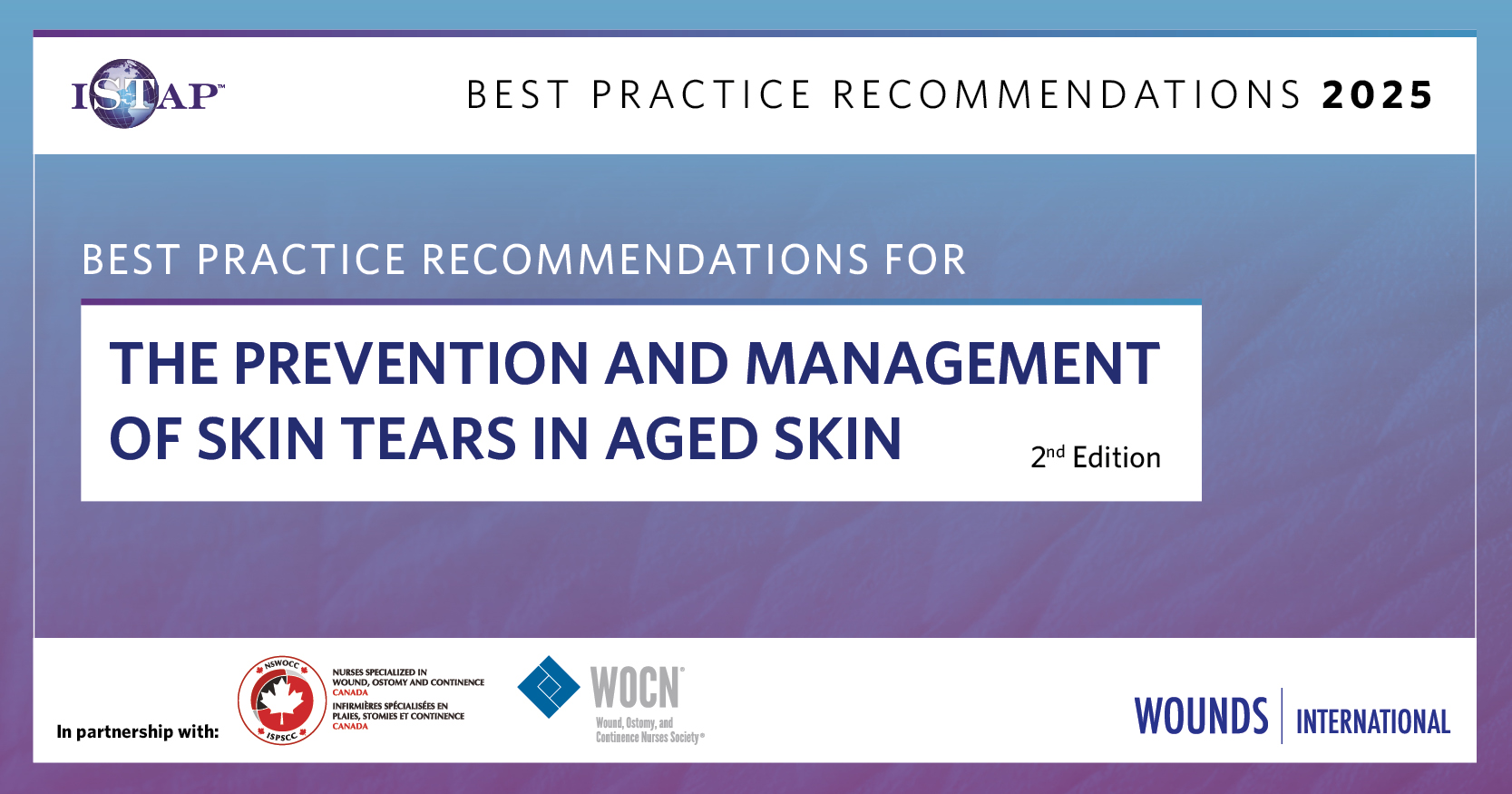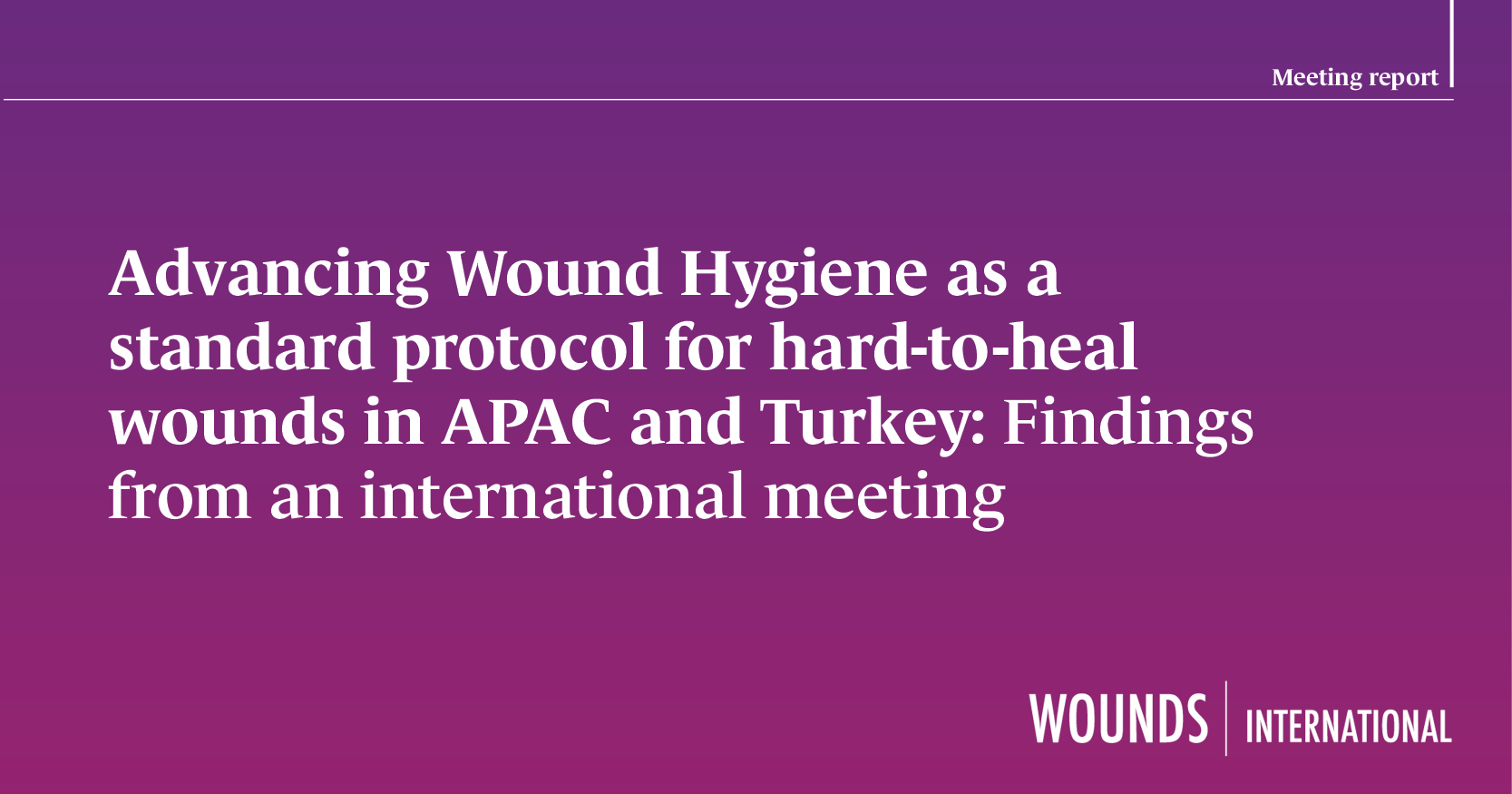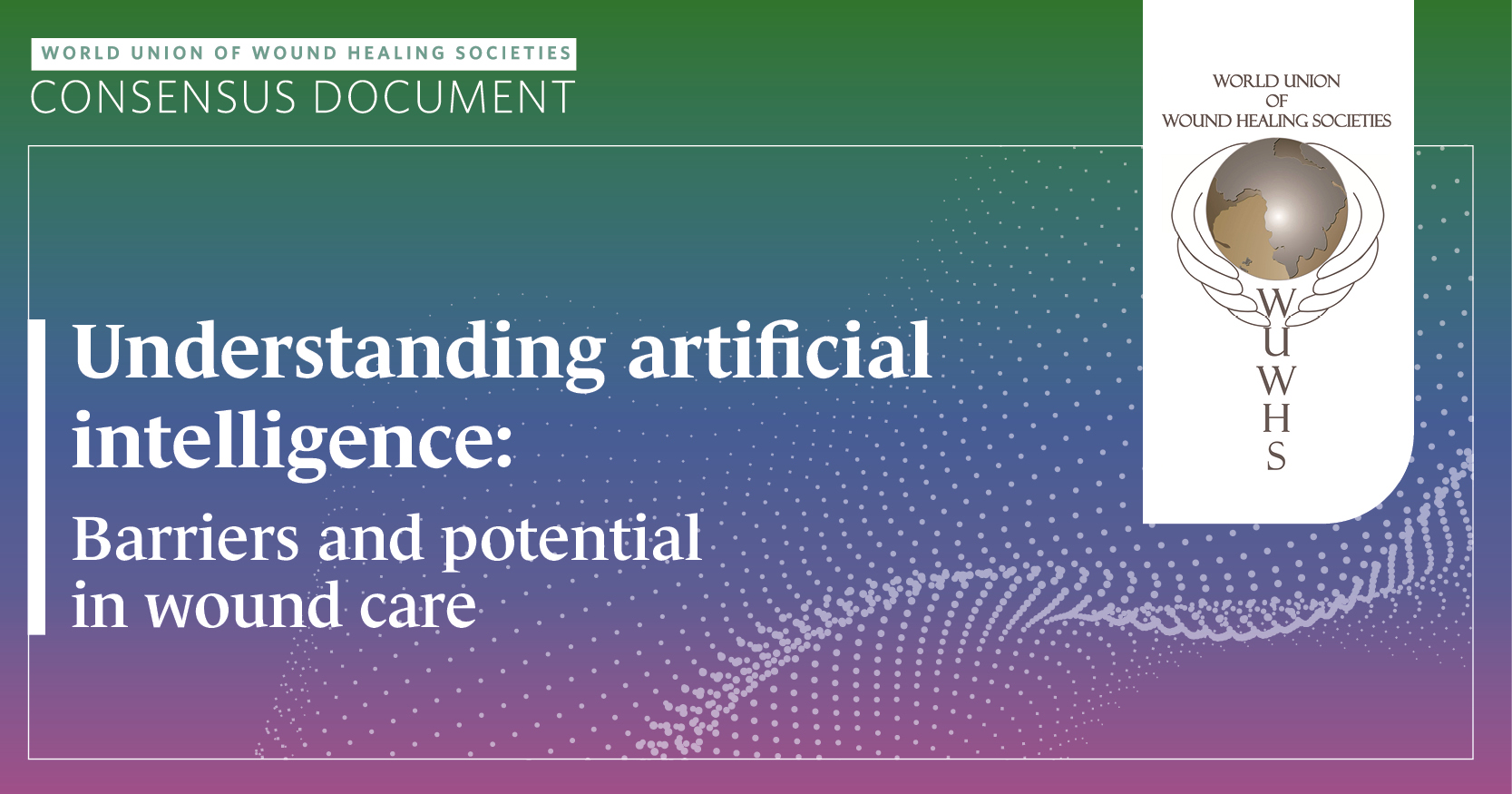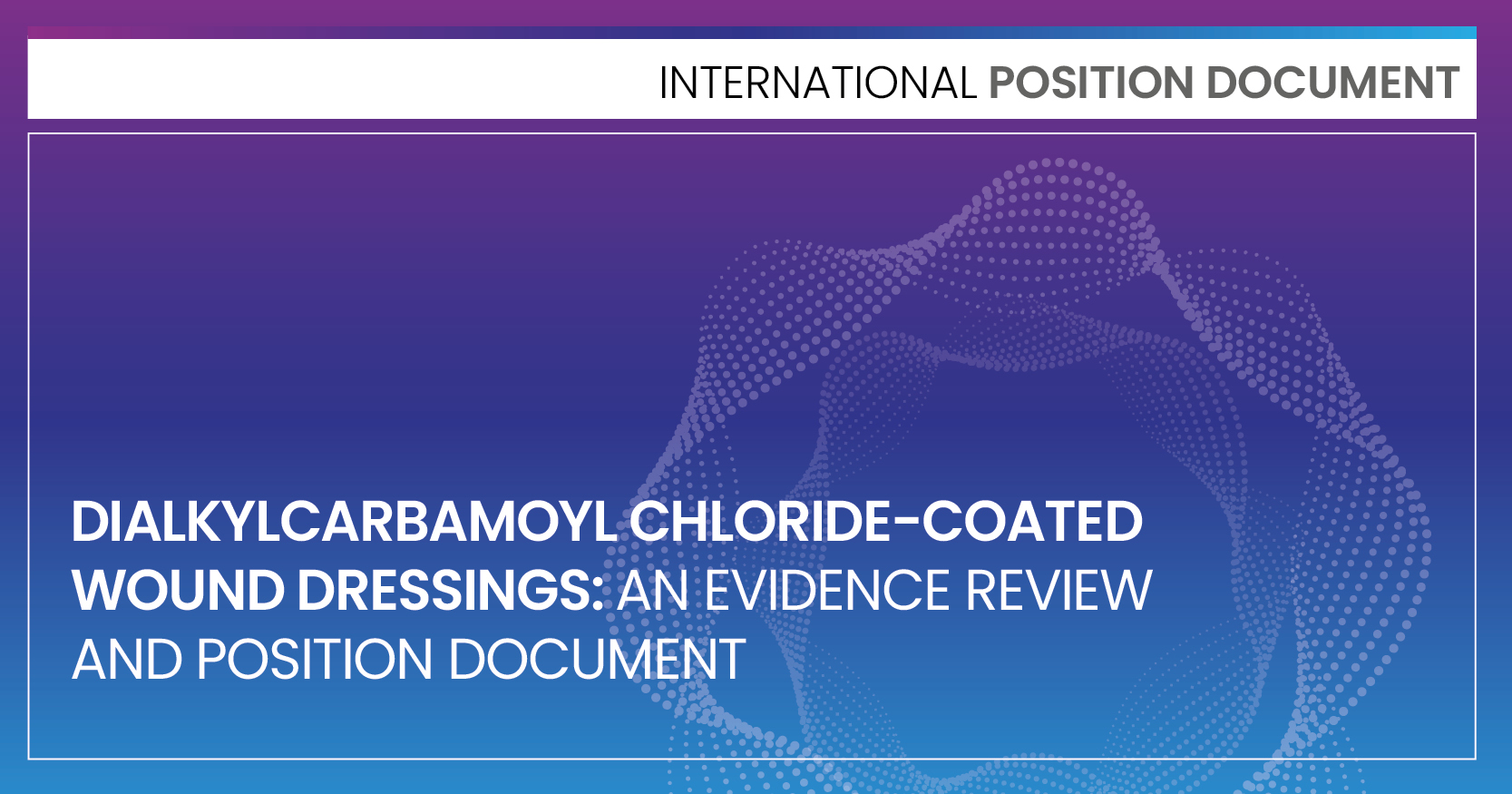Referenceslexis AF, Woolery-Lloyd H, Williams K et al (2021) Racial/ethnic variations in skin barrier: Implications for skin care recommendations in skin of color. J Drugs Dermatol 20(9): 932-8
Al Khaleefa N, Moore Z, Avsar P et al (2022) What is the impact of skincare bundles on the development of skin tears in older adults? A systematic review. Int J Older People Nurs 17(4): e12455
Baki DAA, Avsar P, Patton D et al (2021) What is the impact of topical preparations on the incidence of skin tears in older people? A systematic review. Wounds UK 17(2): 33-43
Bandeira da Silva CV, Beeckman D, de Gouveia Santos VLC (2025) Nurses’ knowledge of skin tears: A cross-sectional survey study across four hospitals in São Paulo, Brazil. J Tissue Viab 34(1): 100874
Beeckman D, Campbell KE, LeBlanc K (2020) Best practice recommendations for holistic strategies to promote and maintain skin integrity. Wounds International
BMJ Best Practice (2025) Accessement of vesicular-bullous rash. Available at: https://bestpractice.bmj.com/topics/en-gb/775#:~:text=Last%20updated:%2031%20Dec%202024,infection%2C%20typically%20heal%20without%20scarring (accessed 11.04.2025)
Brindle T, Farmer P (2019) Undisturbed wound healing. Wounds International 10(2): 40-8
Brooks SG, Mahmoud RH, Lin RR et al (2025) The Skin Acid Mantle: An Update on Skin pH. J Inves Dermatol 145(3): 509-21
Carville K, Smith J (2004) A report on the effectiveness of comprehensive wound assessment and documentation in the community. Prim Intent 12(1): 41-9
Carville K, Leslie G, Osseiran-Moisson R et al (2014) The effectiveness of a twice-daily skin-moisturising regimen for reducing the incidence of skin tears. Int Wound J 11: 446-53
Cilluffo S, Bassola B, Beeckman D et al (2023) Risk of skin tears associated with nursing interventions: A systematic review. J Tissue Viab 32(1): 120–9
Clinton A, Carter T (2015) Chronic Wound Biofilms: Pathogenesis and Potential Therapies. Lab Med 46(4): 277-84
Coalition for At-Risk Skin (2022) At-Risk Skin: 21 Consensus Statements From the Coalition for At-Risk Skin. Available at: https://cdn.coverstand.com/67867/769223/bf47f724cd2d7f37b95ef4eb533b3ea9892fbf23.2.pdf (accessed 11.03.2025)
Deprez J, Beeckman D (2022) Measures that patients living in the community can take for the prevention and treatment of skin tears: A comprehensive review of the literature. J Wound Manage 23(2): 70-7
Dharmarajan TS, Vyas D (2025) Pruritus. In: Norman R, Dharmarajan TS, eds. Geriatric dermatology. Springer, London: 1-27
Dhoonmoon L, Fletcher J, Atkin L et al (2021) Addressing skin tone bias in wound care: assessing signs and symptoms in people with dark skin tones. Wounds UK
Dhoonmoon L, Nair HKR, Abbas Z et al (2023) International Consensus Document: Wound care and skin tone. Signs, symptoms and terminology for all skin tones. Wounds International
Fan S, Jiang H, Shen J et al (2024) Prediction models for skin tears in the elderly: A systematic review and meta-analysis. Geriatr Nurs 59: 103-12
Finch K, Osseiran-Moisson R, Carville K et al (2018) Skin tear prevention in elderly patients using twice-daily moisturiser. Wound Prac Res 26(2): 99-109
Formosa E, Holloway S (2022) A cross-sectional study using the skin tear knowledge assessment instrument (OASES) to assess registered nurse’s knowledge about the identification, classification, prevention, assessment, and management of skin tears in a geriatric rehabilitation hospital. J Wound Manage 23(2): 109-18
Fumarola S, Allaway R, Callaghan R et al (2020) Overlooked and underestimated: medical adhesive-related skin injuries. J Wound Care 29(Sup3c): S1-24
Furukawa C (2019) Factors related to skin tears in a long term care facility. Gan To Kagaku Ryoho 46(Sup1): 154-6
Gefen A (2023) Role of shear in skin tolerance to pressure ulcers and implications for skin tone diversity. J Wound Care 32(8): 469
Groven FMV, Zwakhalen SMG, Odekerken-Schröder G et al (2021) Comfort during the bed bath-A randomised crossover trial on the effect of washing without water versus water and soap in nursing students. J Clin Nurs 30(15-16): 2234-45
Hall J, Buckley HL, Lamb KA et al (2014) Point prevalence of complex wounds in a defined United Kingdom population. Wound Rep Reg 22: 694-700
Hampton S (2015) Accurate documentation and wound measurement. Nurs Times 111(48): 16-9
Hawkins S, Dasgupta BR, Ananthapadmanabhan KP (2021) Role of pH in skin cleansing. Int J Cosmetic Sci 43(4): 474-83
Heerschap C, Nicholas A, Whitehead M (2019) Wound management: Investigating the interprofessional decision-making process. Int Wound J 16(1): 233-42
Holmes RF, Davidson MW, Thompson BJ et al (2013) Skin tears: care and management of the older adult at home. Home Healthcare Nurse 31(2): 90-101
Idensohn P, Beeckman D, Campbell KE et al (2019a) Skin tears: A case-based and practical overview of prevention, assessment and management. J Community Nurs 33(2): 32-41
Idensohn P, Beeckman D, Santos VLCG et al (2019b) Ten top tips: skin tears. Wounds International 10(2): 10-4
Idensohn PJ, Gilbert K, Boodhoo K et al (2025) The Prevalence, Aetiology and Healing Trajectories of Hard-To-Heal Wounds in South Africa. Int Wound J 22(3): e70155
International Skin Tears Advisory Panel (2018) Best practice recommendations for the prevention and management of skin tears in aged skin. Wounds International
International Wound Infection Institute. Therapeutic wound and skin cleansing: Clinical evidence and ecommendations. Wounds International. 2025
Jiang Q, He H, Jing K et al (2025) Knowledge status of skin tear prevention and its demographic and occupational influencing factors: A National cross sectional survey among nurses. J Adv Nurs 81(3): 1412-22
Kacmaz HY, Karadag A, Kahraman H et al (2022) The prevalence and factors associated with skin tears in hospitalized older adults: A point prevalence study. J Tissue Viab 31(3): 387-94
Kacmaz YH, Kahraman H, Cinar SL et al (2023) Skin properties associated with skin tears in older adults: A case-control study. J Tissue Viab 32(4): 585-9
Kacmaz YH, Kahraman H, Topal Hancer A et al (2025) Skin tears in older patients in intensive care units: A multicentre point prevalence study. Nurs Crit Care 30(2): e13131
Kapoor A, Field T, Handler S et al (2019) Adverse events in long-term care residents transitioning from hospital back to nursing home. JAMA Int Med 179(9): 1254-61
Khalid KA, Nawi AFM, Zulkifli N et al (2022) Aging and Wound Healing of the Skin: A Review of Clinical and Pathophysiological Hallmarks. Life (Basel) 12(12): 2142
Khan HTA, Addo KM, Findlay H (2024) Public Health Challenges and Responses to the GrowingAgeing Populations. Pub Health Chall 3: e213
Kim JC, Shim WS, Kwak IS et al (2023) Pathogenesis and Treatment of Pruritus Associated with Chronic Kidney Disease and Cholestasis. Int J Mol Sci 24(2): 1559
Konya I, Nishiya K, Shishido I et al (2023) Minimum wiping pressure and number of wipes that can remove dirt during bed baths using disposable towels: a multi-study approach. BMC Nurs 22(1): 18
Konya I, Shishido I, Nemoto M et al (2024) Risk factors of skin barrier dysfunction in older adults: A systematic review. Jpn J Nurs Sci 21(3): e12597
Koyano K, Nakagami G, Iizaka S et al (2016). Exploring the prevalence of skin tears and skin properties related to skin tears in elderly patients at a long- term medical facility in Japan. Int Wound J 13(2): 189-97
Langemo D, Campbell KE, Holloway S et al (2021) Applying Frailty Syndrome to the Skin: A Review and Guide for Prevention and Management. Adv Skin Wound Care 34(8): 444-7
Lavker RM, Zheng PS, Dong G (1987) Aged skin: a study by light, transmission electron, and scanning electron microscopy. J Invest Dermatol 88(3 Suppl): 44s-51s
LeBlanc K, Baranoski S (2011) Skin tears– State of the science: Consensus statements for the prevention, prediction, assessment, and treatment of skin tears. Adv Skin Wound Care 24(9): 2-15
LeBlanc K, Christensen D, Cook J et al (2013) Prevalence of skin tears in a long-term care facility. J Wound Ostomy Continence Nurs 40(6): 580-4
LeBlanc K, Alam T, Langemo D et al (2016a) Clinical Challenges of Differentiating Skin Tears from Pressure Ulcers. EWMA J 16(1): 17-23
LeBlanc K, Baranoski S, Christensen D et al (2016b) The art of dressing selection: a consensus statement on skin tears and best practice. Adv Skin Wound Care 29(1): 32-46
LeBlanc K, Woo K, Van Den Kerkhof E et al (2020) Skin tear prevalence and incidence in the long-term care population: A prospective study. J Wound Care 29(Sup7): S16-22
LeBlanc K, Woo K, Van Den Kerkhof E et al (2021a) Risk Factors Associated with Skin Tear Development in the Canadian Long-term Care population. Adv Skin Wound Care 34(2): 87-95
LeBlanc K, Beeckman D, Campbell K et al (2021b) Best practice recommendations for prevention and management of periwound skin complications. Wounds International
LeBlanc K, Woo K (2022) A pragmatic randomised controlled clinical study to evaluate the use of silicone dressings for the treatment of skin tears. Int Wound J 19(1): 125-34
LeBlanc K, Dhoonmoon L, Samuriwo R (2024) Skin tears and skin tone Made Easy. Wounds International
Lindsay Leg Club (2021) Resources. Available at: https://www.legclub.org/resources (accessed 24.01.2025)
McNichol L, Lund C, Rosen T et al (2013) Medical adhesives and patient safety: state of the science: consensus statements for the assessment, prevention, and treatment of adhesive-related skin injuries. Orthop Nurse 32(5): 267-81
Miles SJ, Fulbrook P, Williams DM (2022) Skin tear prevalence in an Australian acute care hospital: A 10‐year analysis. Int Wound J 19(6): 1418–27
Mizzou Derm Learning Modules (accessed 2025) Gross anatomy. Available at: https://mizzouderm.weebly.com/anatomy.html (accessed 14.05.2025)
Mitchell A, Hill B (2020) Moisture-associated skin damage: an overview of its diagnosis and management. Br J Community Nurs 25(3): S12-8
Mitchell A (2022) Skin assessment in adults. Br J Nurs 31(5): 274-8
Moncrieff G, Van Onselen J, Young T (2015) The role of emollients in maintaining skin integrity. Wounds UK 11(1): 68-74
Morgan-Jones R, Bishay M, Hernandez-Hermoso JA et al (2019) Incision care and dressing selection in surgical wounds. Wounds International
National Cancer Institute (2025) Nomogram. Available at:
https://www.cancer.gov/publications/dictionaries/cancer-terms/def/nomogram (accessed 06.05.2025)
National Institute for Health and Care Excellence (2022) Lacerations. Available at: https://cks.nice.org.uk/topics/lacerations/ (accessed 18.03.2025)
National Institute for Health and Care Excellence (2024) Emollients. Available at: https://cks.nice.org.uk/topics/eczema-atopic/prescribing-information/emollients/ (accessed 16.01.2025)
National Library of Medicine (2024a) Moisturizers. Available at: https://www.ncbi.nlm.nih.gov/books/NBK545171/ (accessed 11.03.2025)
National Library of Medicine (2024b) Blister. Available at: https://www.ncbi.nlm.nih.gov/mesh?Db=mesh&Cmd=DetailsSearch&Term=%22Blister%22%5BMeSH+Terms%5D (accessed 18.03.2025)
National Wound Care Strategy Programme (2025) The aSSKINg Framework. Available at: https://www.nationalwoundcarestrategy.net/wp-content/uploads/2023/10/The-aSSKINg-Framework.pdf (accessed 28.03.2025)
National Wound Care Strategy Programme (2023) Taking a photograph of your wound. Available at: https://www.nationalwoundcarestrategy.net/wp-content/uploads/2023/06/NWCSP-Digital-imaging-PIS-5Jun23.pdf (accessed 11.03.2025)
National Wound Care Strategy Programme (2021) Practical Recommendations for the use of Digital Images in Wound Care. Available at: https://www.nationalwoundcarestrategy.net/wp-content/uploads/2021/09/Digital-Images-in-wound-care-17Sept21.pdf (accessed 11.03.2025)
Nokaneng E, Fourie A (2025) Management of Skin Tears in Vulnerable Populations from Older Adults to Critically Ill Patients: ISTAP Part 2. Adv Skin Wound Care 38(2): 64-6
O’Brien J, Parker CN, Bui U et al (2024) What is the evidence on skin care for maintaining skin integrity and prevention of wounds? An integrative review. Wound Prac Res 32(1): 25-33
Ousey K, Cooper K, Fumarola S et al (2017) Findings from a multidisciplinary focus group meeting to discuss the issue of medical adhesive-related skin injury (MARSI) in the UK: the way forward. Wounds UK 13(4): 141-5
Parker CN, Finlayson KJ, Edwards HE et al (2020) Exploring the prevalence and management of wounds for people with dementia in long term care. Int Wound J 17(3): 650-9
Peer RP, Burli A, Maibach HI (2022) Did human evolution in skin of color enhance the TEWL barrier? Arch Dermatol Res 314(2): 121-32
Peres GRP, Bandeira da Silva CV, Strazzieri-Pulido KC et al (2022) Skin tears in older adult residents of long-term care facilities: prevalence and associated factors. J Wound Care 31(6): 468-78
Rayner RL, Carville KJ (2024) External validation of a predictive model for aged-related skin tears in Fitzpatrick skin types I-IV cohort. Int Wound J 21(8): e70031
Samuriwo R, Holloway S, Ousey K et al (2024) Critical analysis of the consensus document on current advances in risk assessment, prevention, and treatment of skin tears. A response from ISTAP. J Wound Manag 25(2): 77-80
Sandy-Hodgetts K, Ademuyiwa A, Awang P et al (2022) Incision care and dressing selection in surgical incision wounds: Findings from an international meeting of surgeons and wound care specialists from Africa. Wounds International
Savine L, Snelson K (2024) Medical adhesive-related skin injury (MARSI): Preventing patient harm. Wounds International 15(3): 28-36
Schoonhoven L, van Gaal BG, Teerenstra S et al (2015) Cost-consequence analysis of “washing without water” for nursing home residents: a cluster randomized trial. Int J Nurs Stud 52(1): 112-20
Sen CK (2019) Human Wounds and Its Burden: An Updated Compendium of Estimates. Adv Wound Care (New Rochelle) 8(2): 39-48
Serra R, Ielapi N, Barbetta A et al (2018) Skin tears and risk factors assessment: a systematic review on evidence-based medicine. Int Wound J 15(1): 38-42
Sethi A, Kaur T, Malhotra SK et al (2016) Moisturizers: The Slippery Road. Indian J Dermatol 61(3): 279-87
Souza LM, Teixeira GDS, Silva DMD et al (2021) Prevalence of skin tears in hospitalized adults and older adults. Rev Esc Enferm USP 55: e03683
Stephen Haynes J, Carville K (2011) Skin Tears Made Easy. Wounds International 2(4): 1-6
Van Tiggelen H, Van Damme N, Theys S et al (2019) The prevalence and associated factors of skin tears in Belgian nursing homes: A cross-sectional observational study.
J Tissue Viab 28(2): 100-6
Van Tiggelen H, LeBlanc K, Campbell K et al (2020) Standardizing the classification of skin tears: Validity and reliability testing of the International Skin Tear Advisory Panel Classification System in 44 countries.
Br J Dermatol 183: 146-54
Van Tiggelen H, Alves P, Ayello E et al (2021) Development and psychometric property testing of a skin tear knowledge assessment instrument (OASES) in 37 countries. J Adv Nurs 77(3): 1609-23
Van Tiggelen H, Beeckman D (2022) Skin tears anno 2022: An update on definition, epidemiology, classification, aetiology, prevention and treatment.
J Wound Manag 23(2): 38-51
Varga M, LeBlanc K, Whitehead L et al (2022) Engaging the person with a lower leg skin tear in the wound-healing journey: A case study. J Wound Manage
23(2): 52-9
Veje PL, Chen M, Jensen CS et al (2020) Effectiveness of two bed bath methods in removing microorganisms from hospitalized patients: A prospective randomized crossover study. Am J Infect Control 48(6): 638-43
Voegeli D (2007) Factors that exacerbate skin breakdown and ulceration. Available at: https://www.researchgate.net/publication/313098689_Factors_that_exacerbate_skin_breakdown_and_ulceration (accessed 26.03.2025)
Völzer B, El Genedy-Kalyoncu M, Fastner A et al (2024) Enhancing skin health and safety in aged care (SKINCARE trial): A cluster-randomised pragmatic trial. Int J Nurs St 149: 104627
Vuorinen M, Ram F (2023) Effectiveness of moisturiser for the prevention of skin tears in older adults residing in long-term care facilities: a clinical review. Br J Commun Nurs 28(Sup9): S14-8
Wang G, Wang H, Wang L et al (2025) Assessing Skin Tear Knowledge Among Nurses: A Multicentre Cross-Sectional Survey. J Clin Nurs 34(4): 1409-19
Wongvibulsin S, Feterik K (2022) Recommendations for Better Adoption of Medical Photography as a Clinical Tool. Interact J Med Res 11(2): e36102
Woo K, LeBlanc K (2018) Prevalence of skin tears among frail older adults living in Canadian long-term care facilities. Int J Palliat Nurs 24(6): 288-94
Wounds UK (2015) All Wales Guidance for the prevention and management of skin tears
Wounds UK (2020) Best Practice Statement: Management of lower limb skin tears in adults. Wounds UK, London
Yang S, Liang X, She J et al (2024) Prevalence and incidence of skin tear in older adults: A systematic review and meta-analysis. J Tissue Viab 33(4): 1017-24
Young C (2021) Using the ‘aSSKINg’ model in pressure ulcer prevention and care planning. Nurs Stand 36(2): 61-6





